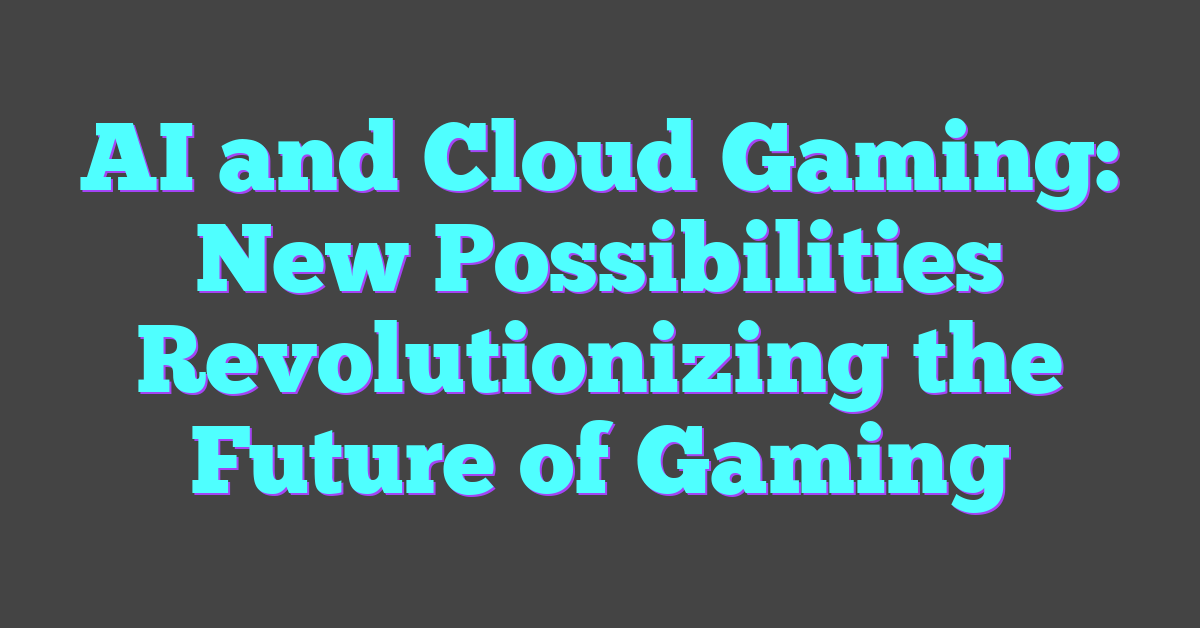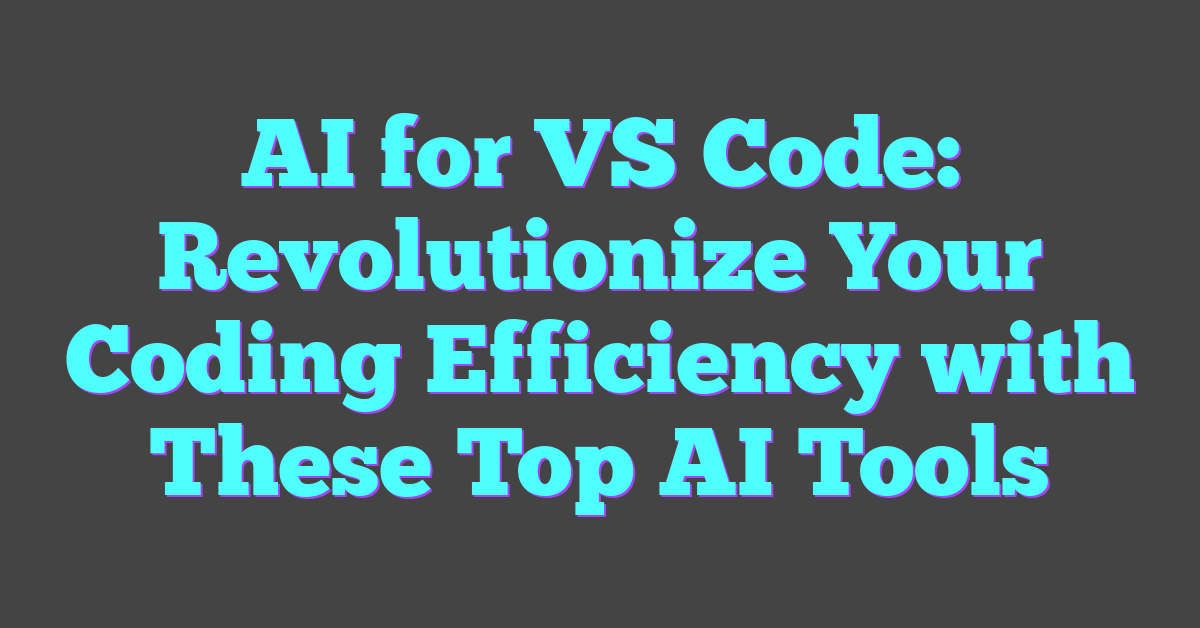Key Takeaways
- Personalized Gaming Experiences: AI adapts game difficulty and tailors content based on individual player behaviors, enhancing engagement and satisfaction.
- Optimized Server Performance: Machine learning algorithms predict peak usage and manage resources efficiently, reducing latency and ensuring smooth gameplay.
- Balanced Matchmaking: AI-driven matchmaking pairs players with similar skill levels, fostering competitive and enjoyable multiplayer environments.
- Enhanced Immersion: Natural language processing and AI-powered content generation create more interactive and diverse game worlds, increasing player immersion.
- Advanced Streaming and Graphics: AI optimizes game streaming and dynamically adjusts graphics settings, improving performance and visual quality across various devices.
- Addressing Challenges: Despite advancements, data privacy and infrastructure limitations remain key challenges that need to be addressed for the continued growth of AI-driven cloud gaming.
AI is transforming cloud gaming by enhancing player experiences and streamlining game development. As technology advances, the integration of artificial intelligence opens up exciting new possibilities for both gamers and developers.
From personalized gaming environments to smarter matchmaking, AI is making cloud gaming more intuitive and accessible than ever before. This synergy between AI and cloud technology is reshaping the future of interactive entertainment, promising innovations that were once thought impossible.
Understanding AI in Cloud Gaming
Artificial intelligence enhances cloud gaming by enabling real-time data processing and adaptive learning. AI algorithms analyze player behavior, adjusting game difficulty and offering personalized experiences. For example, dynamic difficulty adjustment ensures that games remain challenging yet enjoyable for diverse skill levels.

Machine learning models optimize server performance by predicting peak usage times and managing resources efficiently. This reduces latency and minimizes lag, providing a smoother gaming experience. Additionally, AI-driven matchmaking pairs players with similar skill levels, fostering competitive and balanced gameplay.
Natural language processing allows for more intuitive voice commands and interactions within games. Players can communicate with in-game characters or control game functions using voice, increasing immersion and accessibility. Furthermore, AI-powered content generation creates diverse game environments and narratives, expanding the possibilities for game developers and enhancing replayability for players.
| AI Application | Functionality | Benefit |
|---|---|---|
| Real-time Data Processing | Analyzes player behavior | Personalized gaming experiences |
| Dynamic Difficulty Adjustment | Modulates game difficulty based on skill | Maintains engagement across skill levels |
| Server Performance Optimization | Predicts peak usage and manages resources | Reduces latency and lag |
| AI-driven Matchmaking | Pairs players with similar skill levels | Ensures balanced and competitive gameplay |
| Natural Language Processing | Facilitates voice commands and interactions | Enhances immersion and accessibility |
| AI-powered Content Generation | Creates diverse environments and narratives | Expands game variety and replayability |
By integrating these AI technologies, cloud gaming platforms deliver more responsive, engaging, and personalized experiences. The continuous evolution of AI capabilities promises to further transform the landscape of interactive entertainment.
Key Benefits of AI in Cloud Gaming
AI integration transforms cloud gaming by delivering superior performance and tailored experiences. These advancements enhance player satisfaction and optimize gaming environments.
Enhanced User Experience
AI streamlines gaming interfaces, reducing latency and ensuring smooth gameplay. Machine learning algorithms adjust graphic settings in real-time, maintaining optimal performance during peak usage. Natural language processing enables intuitive voice commands, allowing seamless interaction without interrupting gameplay flow.
Personalized Gameplay
AI analyzes player behavior to customize game difficulty and content dynamically. Recommendation systems suggest games based on individual preferences, increasing engagement. Adaptive learning models modify in-game challenges to match skill levels, providing balanced and enjoyable experiences for diverse player bases.
Technological Innovations
Advancements in AI and machine learning drive the evolution of cloud gaming technologies. These innovations enhance gaming experiences and optimize performance across various platforms.
AI-Powered Game Streaming
AI enhances game streaming by optimizing data compression and reducing latency. Machine learning algorithms predict network fluctuations, ensuring consistent streaming quality even during peak usage. Intelligent buffering techniques adapt to player behavior, minimizing interruptions and providing seamless gameplay. Additionally, AI-driven codecs improve image quality without increasing bandwidth, delivering high-definition graphics efficiently.
Adaptive Graphics and Performance
AI adjusts graphics settings in real-time based on device capabilities and network conditions. TensorFlow models analyze system performance metrics, dynamically scaling resolution and frame rates to maintain smooth gameplay. Machine learning algorithms forecast potential lag, proactively adjusting settings to prevent disruptions. This adaptability ensures an optimal balance between visual fidelity and performance, catering to a wide range of hardware configurations and internet speeds.
Challenges and Limitations
Despite significant advancements, AI and cloud gaming face several challenges that impact their integration and user experience.
Data Privacy Concerns
AI-driven cloud gaming collects extensive player data to personalize experiences. This data includes gameplay behavior, preferences, and personal information. Ensuring data security is critical to prevent breaches and unauthorized access. Compliance with regulations like GDPR and CCPA is mandatory, requiring robust data governance frameworks. Additionally, users demand transparency in data usage and control over their personal information, posing challenges for developers to balance personalization with privacy.
Infrastructure and Latency Issues
Cloud gaming relies on robust infrastructure and low latency to deliver seamless experiences. High-speed internet connections are essential, yet not universally available, limiting accessibility for some users. Latency can disrupt gameplay, causing delays between user inputs and in-game responses. Building and maintaining data centers close to major user bases helps reduce latency, but the cost and complexity of expanding infrastructure remain significant. Furthermore, scaling resources during peak times ensures consistent performance, necessitating advanced load balancing and server optimization techniques.
Future Possibilities
AI and cloud gaming continue to unlock innovative advancements, shaping the next generation of interactive entertainment. Emerging technologies promise enhanced immersion and diverse content creation.
Integration with Virtual Reality
Integrating AI with virtual reality (VR) transforms cloud gaming by creating more immersive experiences. AI-driven adaptive environments modify in real-time based on player interactions, ensuring dynamic and responsive virtual worlds. Gesture recognition powered by machine learning allows intuitive control, enhancing user engagement. Additionally, AI optimizes rendering processes, reducing latency and improving visual fidelity. These advancements enable seamless blending of cloud gaming and VR, offering players unparalleled immersion and interactivity.
Expansion of AI-Driven Content Creation
AI-driven content creation revolutionizes game development by automating and enhancing creative processes. Procedural generation algorithms create expansive and varied game environments without extensive manual input. Machine learning models analyze player preferences to tailor narratives and missions, increasing personalization and replayability. Furthermore, AI assists in character design by generating diverse and realistic avatars, enriching the gaming experience. These innovations streamline content production, allowing developers to focus on unique storytelling and gameplay mechanics, while providing players with continuously evolving and engaging content.
Conclusion
AI and cloud gaming are opening doors to experiences gamers never thought possible. By blending intelligent algorithms with powerful cloud infrastructure, the gaming world is becoming more dynamic and personalized. Players can enjoy smoother gameplay and more engaging environments tailored to their preferences.
As technology continues to advance, the synergy between AI and cloud gaming promises even greater innovations. From immersive virtual realities to seamless cross-platform play, the future holds endless opportunities for both developers and players. The ongoing collaboration in this space ensures that gaming remains exciting and accessible for everyone.
Embracing these new possibilities, the gaming community is set to explore uncharted territories, making interactive entertainment more thrilling and inclusive than ever before.




